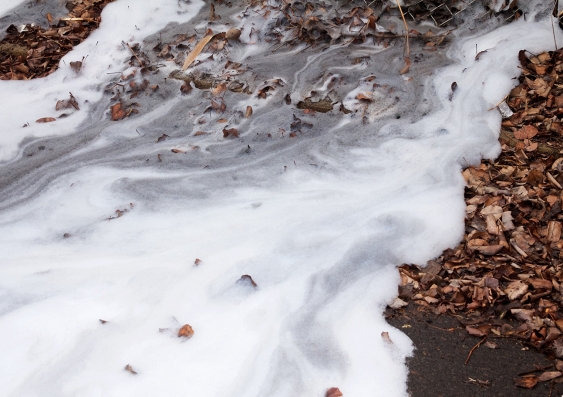Scientists at UNSW Sydney are developing catalysts able to break down PFAS chemicals that contaminate water.
Per-and poly-fluoroalkyl substances (PFAS) are known as ‘forever chemicals’ because they are notoriously resistant to degradation. Due to their stable chemical structure, PFAS – which are found in thousands of variants – are used in oil and grease-resistant food packaging, non-stick cookware, cosmetics, clothing, and fire-fighting foams.
The chemicals are so widespread that they have infiltrated water sources and soil. In fact, recent reports have found that much of our global water resources exceed the drinking limits of PFAS and concerns over their environmental and health impacts have steadily escalated.
Despite ongoing efforts to develop ways of degrading PFAS, current methods are limited by a lack of efficient, scalable and environmentally friendly processes.
Now, a team of scientists from UNSW’s School of Chemistry have designed a catalyst system that can activate a reaction to break down common types of branched PFAS. The new method, developed by Dr Jun Sun and Professor Naresh Kumar and recently published in the journal Water Research, holds promise for more efficient and sustainable PFAS remediation in the future.
Working alongside Prof Denis O’Carroll, Prof Michael Manefield and Dr Matthew Lee from the UNSW School of Civil and Environmental Engineering, and funded by a $3 million grant from the Australian Research Council in 2019, the team have designed a catalyst system that could play a key role in solving the problem of PFAS.
“Owing to its robust nature, simple application, and cost effectiveness, the new system we have developed shows successful PFAS remediation in the lab, which we hope to eventually test at a larger scale,” says Dr Sun, first author of the paper.
Media enquiries
For enquiries about this story and to arrange interviews please contact Lilly Matson.
Tel: 0426 656 007
Email: l.matson@unsw.edu.au
PFAS: what, where and when?
Since the 1940s, PFAS chemicals have been produced on an industrial scale, with their unique structure used in various commercial and industrial applications, most notably firefighting foam.
“In the time that PFAS was being produced globally, it wasn’t realised that this chemical is essentially non-destructible,” says Prof. Kumar.
The chemical is so resistant to degradation that people in Australia – and all over the world – are likely to have low levels of PFAS in their bodies. “PFAS is such a robust chemical that it cannot be degraded within the human body,” says Prof. Kumar. “And that has become a concern.”
Some scientific research suggests that exposure to certain PFAS may lead to adverse health outcomes, but more evidence is needed to reveal how different levels of exposure to PFAS can lead to various health effects.
PFOA, one of the most concerning types of PFAS, is subject to the Stockholm Convention on Persistent Organic Pollutants (POPs). In 2023, the World Health Organization’s (WHO) International Agency for Research on Cancer (IARC) reclassified PFOA from a possible human carcinogen to a Group 1 carcinogen, due to compelling evidence of its carcinogenicity in humans.
Due to their potential risks and their durability, many regulatory bodies have tightened PFAS regulations and set precautionary drinking water limits, including in Australia.
“The pressing need for effective PFAS remediation has driven the investigation into a wide array of treatment methods, spanning from physical separation processes to advanced destruction techniques, all which have their limitations,” says Dr Jun.
There is an ongoing need to come up with an energy efficient and environmentally friendly way to remove PFAS from water.
Current processes used to reduce PFAS
PFAS is a fluorinated chemical bound by strong Carbon-Fluoride (C-F) bonds, which are famously hard to break.
An existing method to remove PFAS from water and soil works by absorbing PFAS onto carbon material. “So if you’ve got a pad of activated carbon, and you pass water through it, you can absorb PFAS onto the activated carbon, but you then have to burn it to destroy the PFAS, or safely store it,” says Prof. Kumar.
This is a laborious and energy inefficient process, not to mention the environmental impacts of burning carbon material. And while physical separation techniques such as this offer potential for isolating PFAS, they do not actually destroy the chemical, ultimately exacerbating the management challenges associated with PFAS-contaminated waste.
Another method scientists have explored uses a strong oxidising agent to break it apart. However, this process requires aggressive chemicals that break PFAS down into smaller structures, that can become even harder to remove completely.
“There is an ongoing need to come up with an energy efficient and environmentally friendly way to remove PFAS from water,” says Dr Sun. “The method we have developed is a type of reductive defluorination, which decreases the toxicity of PFAS by breaking the strong C-F bonds of branched PFAS.”
Developing an effective catalyst
Nano zero-valent metals (nZVMs) are a type of eco-friendly chemical reducing agent that scientists have used extensively for decades in the treatment of groundwater and soil contaminated with chlorinated compounds, using a dechlorination process.
Despite its potential elsewhere, such as removing heavy metals from groundwater, there has been a lack of research into the defluorination of PFAS using nZVMs, largely due to the lack of appropriate catalysts required to activate the reaction.
Previous studies indicate that PFAS can be degraded using nano zero-valent zinc and the naturally occurring catalyst vitamin B12, a water soluble vitamin present in our daily diet. But again, the process has been found to be slow and inefficient.
“Inspired by the fact that B12 has the potential to catalyse this reaction, we wanted to synthesise a catalyst that mirrors the unique ring shape of B12, which we did using a structure known as a porphyrin ring,” says Dr Sun.
Testing their method out on two common types of PFAS – branched PFOS and PFOA – Prof. Kumar and Dr Sun mixed the PFAS chemicals with nZVMs and the porphyrin ring in a buffer solution and measured the breakdown of the PFAS.
"We did this by following how much fluoride is released as those strong carbon-fluoride bonds are broken down,” says Dr Sun. “So by simply measuring the amount of fluoride ion that is produced by the reaction, we can tell how much of the PFAS have been degraded.”
“We also compared these results to the existing B12 catalysts and found that the cobalt porphyrin ring we have used was more efficient and faster at degrading branched PFAS,” says Dr Sun.
The results from this latest study revealed that within five hours, approximately 75 per cent of the fluoride had been released from branched PFOS and PFOA, significantly reducing the amount of PFAS within the solution. Meanwhile, the B12 based catalyst system only showed less than 8 per cent defluorination within five hours.
Potential for large scale application
While further research is required before we might see this method applied at scale, Prof. Kumar, Dr Sun and the team have their sights firmly set on the next steps.
“The next step for us is to really try this on a pilot scale to see if this can be done out of the laboratory on a real sample,” says Prof. Kumar. “Then we’d like to try it out in a real water purification system or sites which are contaminated with PFAS.”
The team are also considering ways to scale up the process in an environmentally friendly way, by incorporating the catalyst into an electrode. "These findings would allow us to set up the catalytic system in an electrochemical cell, where applied voltage can replace the nano zero-valent zinc so that the PFAS can be degraded within the cell.” says Prof. Kumar.
"We hope to try this method out on linear PFAS, not just branched types,” says Dr Sun. “But we’re already one step closer to solving a widespread environmental problem.”








